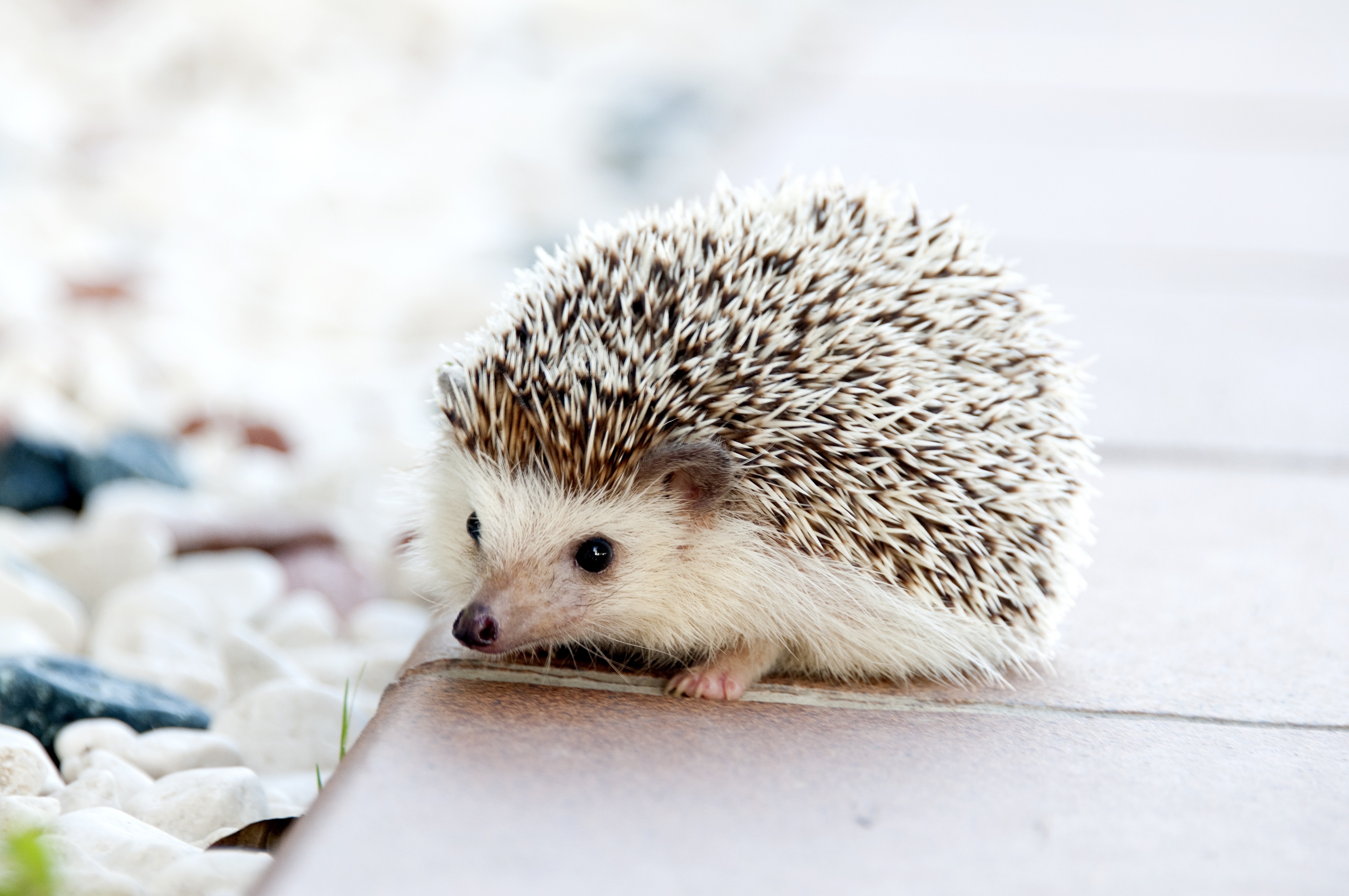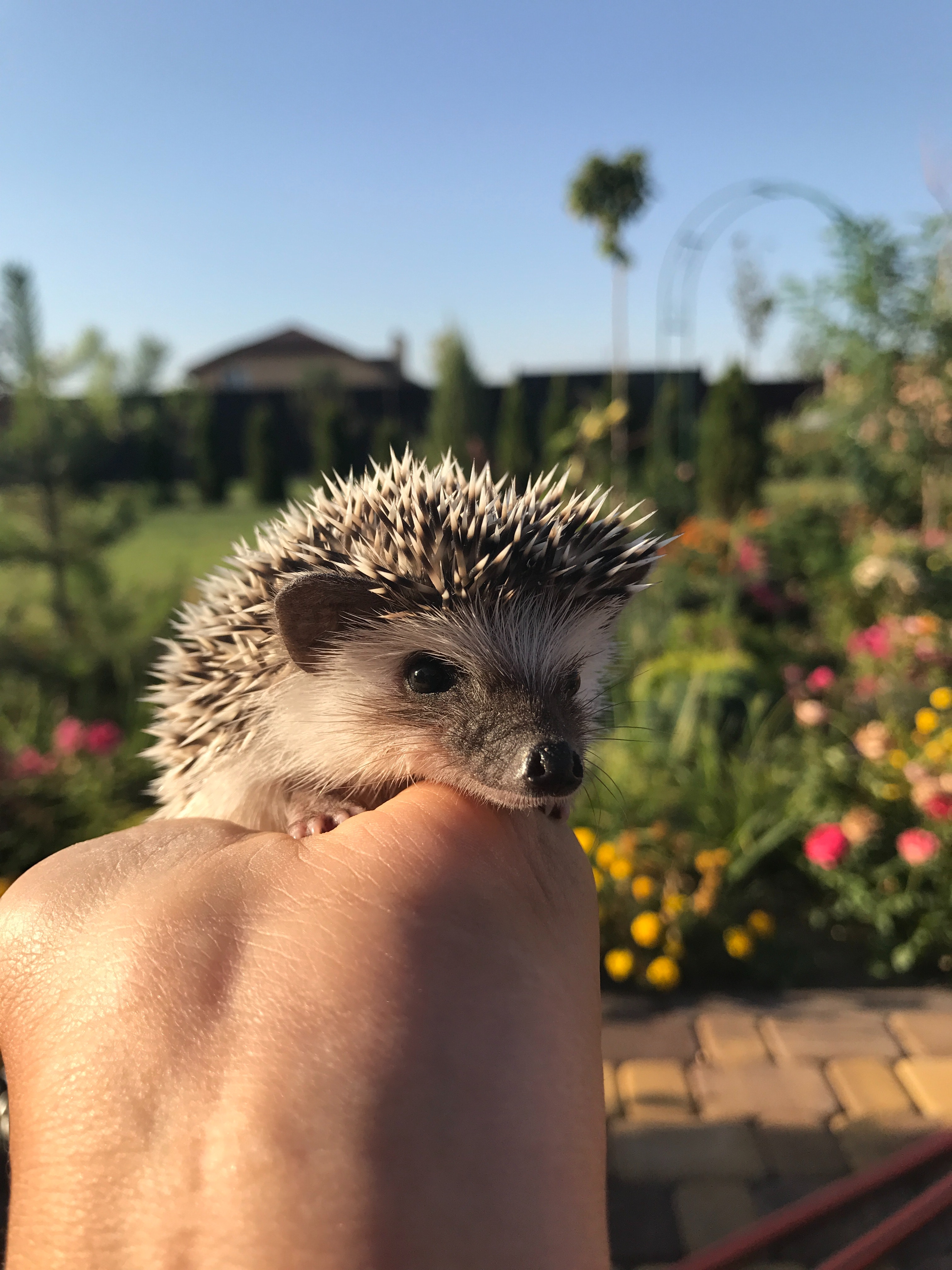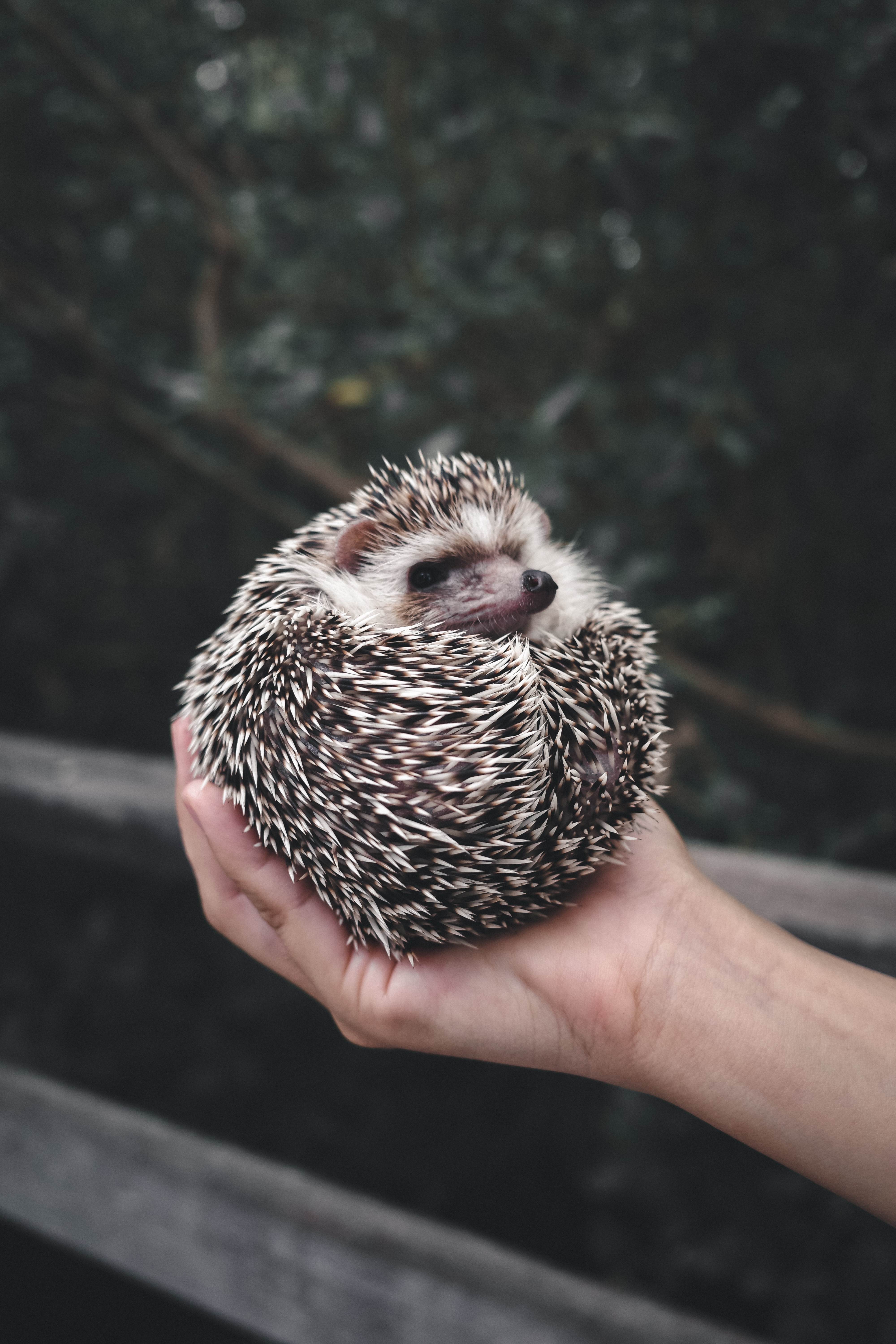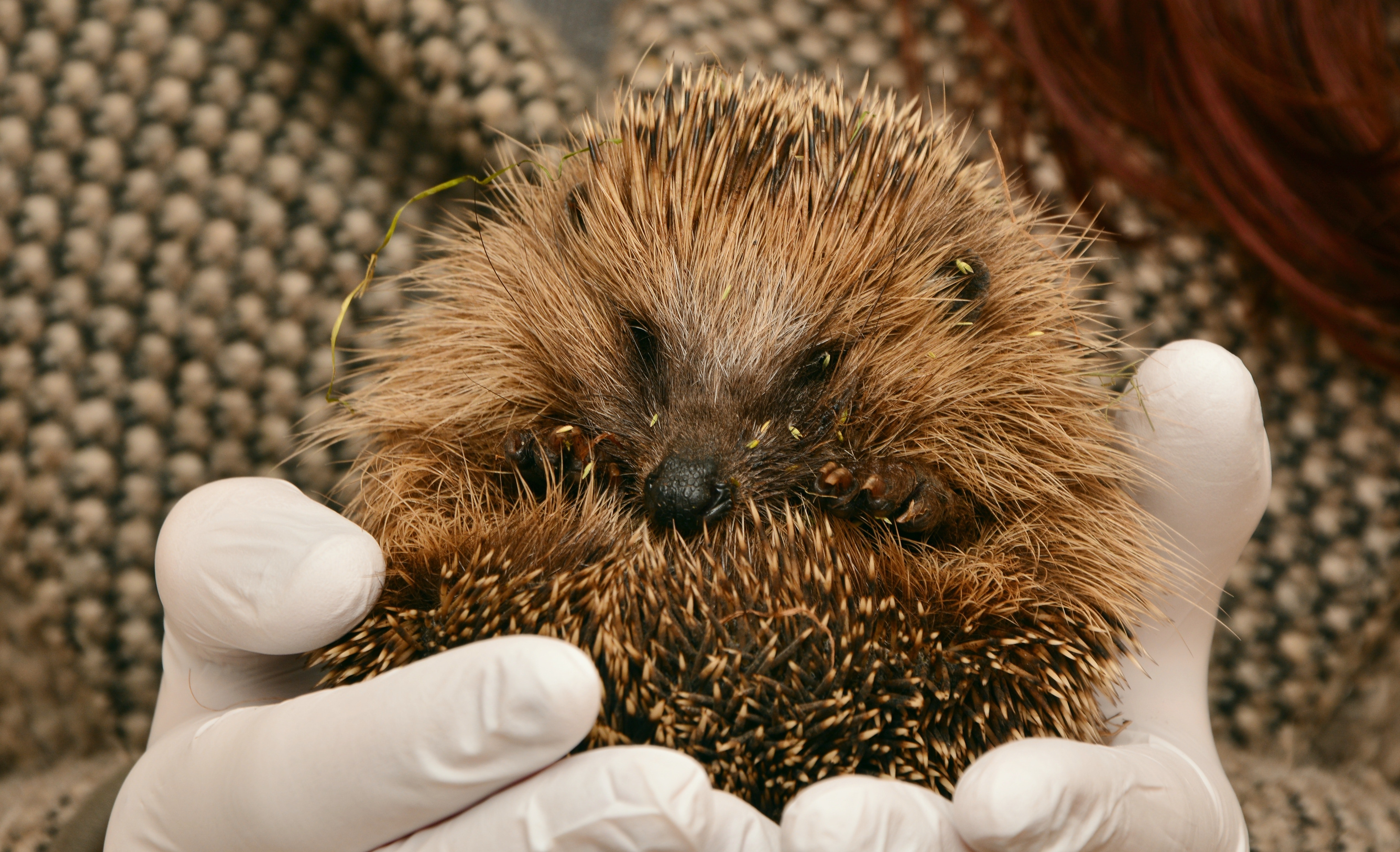- Home
- Best Pet for Me List
- Hedgehog
Hedgehog
 Photo by Pixabay: https://www.pexels.com/photo/shallow-photo-of-hedgehog-50577/
Photo by Pixabay: https://www.pexels.com/photo/shallow-photo-of-hedgehog-50577/Hedgehogs are tiny little spiky animals that have begun to be popular as pets. Many people think they are related to porcupines because of their spines, but they are actually rodents, not related to porcupines at all. Most hedgehog pets come from Africa and a few come from Europe. They can be lovely pets for the right person.
Hedgehogs have not been domesticated for very long. Some people advise against having hedgehogs as pets at all because it is hard to provide them an adequate life in captivity with regards to their temperature and humidity needs, dietary needs, and exercise and activity needs.
Cage
Hedgehogs require a certain temperature to survive. As important as the amount of space, you need to have the right temperature. You should have a temperature control system if you are going to have a hedgehog. The ideal temperature is between 74 and 76 degrees F, but it should never go below 72 degrees F or above 80 degrees F. A humidity of over 50% will make the temperature feel warmer than it actually is, and under 40% will make it feel cooler. So you need to be aware of the humidity as well. Too low humidity will cause your hedgehog's skin to be dry. I’ll talk about conditions to avoid hibernation in the health section.
Wire cages are great for hedgehogs. The floor should be solid, though. Hedgehogs will climb the wires and could hurt themselves, so it is recommended to line the bottom and the sides of the cage with rigid plastic material. They will also try to poke their heads through the wires and hurt themselves, so try to find a cage with a small space between the wires. Any place where your pet can get to the wires should be lined with plastic.
The minimum cage space should be 4 square feet, but as with all small furries, the bigger the cage, the better. A multi-story cage will allow your hedgehog to have more room to run around in without taking up too much floor space in your apartment. However, you have to be really careful about tunnels or ramps between the levels so the hedgehog doesn’t hurt themselves falling from the ramp or getting stuck in a tunnel. Temperature control is also an issue in a multi-level cage.
 Photo by Anna Bondarenko: https://www.pexels.com/photo/a-person-holding-a-hedgehog-6730150/
Photo by Anna Bondarenko: https://www.pexels.com/photo/a-person-holding-a-hedgehog-6730150/Bedding
Avoid any bedding that is dusty or contains ink or chemicals. Paper bedding is considered ideal for hedgehogs, as long as it has no toxic inks.
You can use fleece or other textiles to line the bottom of the cage. Blankets and towels have an added benefit in that you can wrap the hedgehog up when you pick up your pet and protect yourself from their spinesIf you litter box train your hedgehogs, paper bedding or paper towels are good things to line the litter box with. Textiles are great in that you can wash and reuse them.
You can line their litter box with a different bedding than their regular bedding. Avoid pine shavings cedar bedding, or kitty litter. Perhaps use textile for the cage and paper for the litter box. Some people use paper towels for the litter box, but some hedgehogs eat the paper towels, so shredded paper is used instead.
Food and Water
The diet of a wild hedgehog consists of bugs, plants, and roots. You can get hedgehog food from the pet store. You can also feed them dry cat food with a low-fat content. Your hedgehog might not like the smell of a fish-based cat food, and if they do eat it, the hedgehog poop might smell like fish.
Be careful of feeding your hedgehog too many mealworms. Hedgehogs LOVE mealworms, but this food does not provide them with a lot of nutrition. Mealworms have too much phosphorus, which can deplete the calcium levels of a hedgehog if too many are eaten. So they should not eat mealworms often. Phoenix worms or black soldier fly larvae are good treats for a hedgehog.
Always provide them with water from a bowl or bottle. Make sure they can drink from a bottle before that becomes their only source of water.
 Photo by Anna Bondarenko: https://www.pexels.com/photo/a-person-holding-a-hedgehog-6730150/
Photo by Anna Bondarenko: https://www.pexels.com/photo/a-person-holding-a-hedgehog-6730150/Sociability, Activity, and Toys
Hedgehogs like to be solitary, so it’s best to have only one. You can train them to enjoy being held. They curl up into a ball when they are frightened, which makes their spines stick out which can hurt your hands. You might want to buffer yourself by holding them in a towel. They don’t bite though
They need space to run around, both in their cage and outside of it. Make sure any area they are in is hedgehog-proofed and that they can’t climb too high. If they fall from a big height they could really injure themselves.
Hedgehogs are active at night. Just before you go to bed is the best time to play with your hedgehog. A solid floor exercise wheel is a great addition to their cage to make sure they get enough running. They like digging, climbing, and swimming.
Hedgehogs will do a behavior called self-anointing. They will twist their bodies, start foaming from the mouth, and leave that foaming spit on their spines by extending their tongues really far. Nobody knows exactly why hedgehogs do this, but it is pretty entertaining to watch, once you are reassured that it is a normal behavior and they are not having a seizure or are rabid.
Size
Hedgehogs tend to be 5 -12 inches long including their tails. They weigh 10 - 17 ounces. Different breeds of hedgehogs are bigger than others. The African Pygmy hedgehogs are on the smaller end of the spectrum while European hedgehogs are larger. Most hedgehogs can easily fit in an adult’s hand.
 Photo by Pixabay: https://www.pexels.com/photo/animal-animal-world-close-up-cute-356173/
Photo by Pixabay: https://www.pexels.com/photo/animal-animal-world-close-up-cute-356173/Lifespan and Health
You can expect your hedgehog to live about 6-8 years.
Hedgehogs can transmit bacteria, such as salmonella, so be sure to wash your hands after handling them.
They do not shoot out their spines like porcupines do, and their spines do not contain poisons or anything. Some people develop “Hedgie hives” after handling their hedgehog. This can be helped by keeping your hedgehog clean, washing your hands after handling them, and many times the occurrence of hedgie hives decreased the longer a person has a hedgehog.
Hedgehogs should be examined by a vet every year. It might be difficult to find a vet who knows about hedgehog care, so that is something to consider if you are thinking about getting a hedgehog as a pet. Females, especially, should be neutered to prevent uterine tumors.
Sometimes hedgehogs get ringworm ( which can be transmitted to humans) and mites. They can have dental and cardiac problems. Some hedgehogs get a condition called wobbly hedgehog syndrome, which is a neurologic disease that causes paralysis from the back to the front and ends up being fatal.
In the wild, hedgehogs hibernate. However, it can be dangerous for pet hegehogs to hibernate. The usual animal that is a pet hedgehog, African Pigmy Hedgehog, doesn't have the fat reserves that european hedgehogs have. Hibernation can cause a lot of health problems for pet hedgehogs. You can prevent hibernation by maintaining heat at the proper temperature, making sure it never ever dips below 72 degrees, but usually stays much higher than that. Also, make sure there are plenty of daylight hours for your hedgehog, using UV lights as needed. The final way to discourage hibernation is to keep a steady stream of food. If a hedgehog does start hibernating, it should be considered a medical emergency. You could try to warm them up with skin to skin contact with you, but they should also see a vet



New! Comments
Have your say about what you just read! Leave me a comment in the box below.